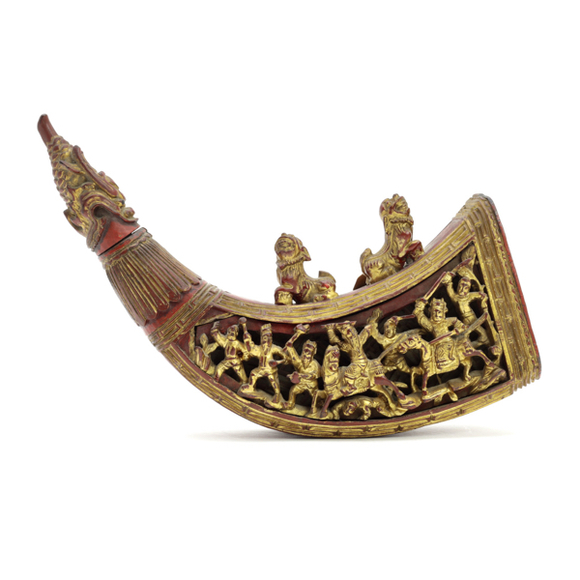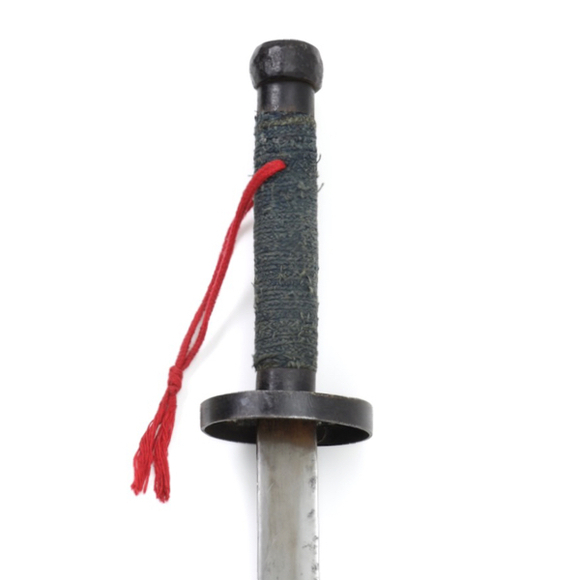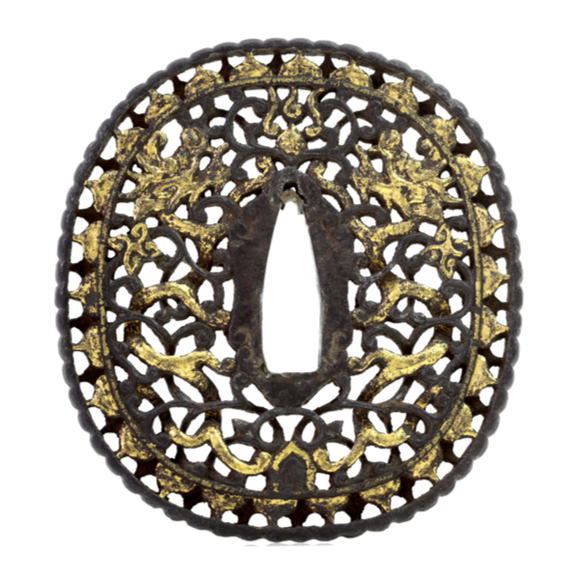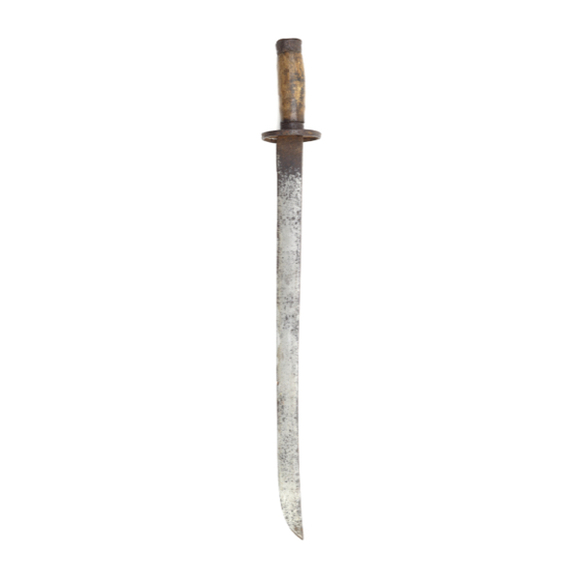Language: Mandarin Chinese
Source: Classical literature
Description
Dāoqiào shù (刀鞘束) literally means "saber scabbard binder".
The Qing saber usually consists of two wooden halves joined together, usually covered with leather or ray-skin. They are held together by four metal mounts which are all called dāoqiào shù (刀鞘束) according to the Tongwen Guanghui Quanshu, a dictionary of 1702.1
The Wuti Qingwen Jian, a dictionary of 1766 adds some more nuance. Here, the two mounts on either end of the scabbard are dāoqiào bìshù (刀鞘庇束) or "saber scabbard end binder" and the two in the middle, the ones that hold the suspension bar are more precisely called dāoqiào zhōngshù (刀鞘中束) or "saber scabbard middle binder".2
The Gongbu Junqi Zeli, a text on military arms manufacture of 1815 provides different names for each of the types. The mouthpiece is dāoqiào kǒugū (刀鞘口箍) or "saber scabbard mouthpiece", the suspension bands are yào zi (靿子) or "leg of boots" and depending on its shape, the endpiece is dāo dǐ yún (刀底雲) or "saber end cloud", or dāo dǐ gū (刀底箍) or "saber endpiece"3

A military saber of the 19th century with a cloud-style endpiece.
Also see
For a complete overview of saber terminology, see: A Chinese saber glossary.
References
1. Tongwen Guanghui Quanshu (同文廣彙全書) or "Enlarged and complete dictionary" of 1702. A Qing imperial dictionary in Chinese and Manchu, each entry double-checked and approved by the Kangxi emperor.
2. Wuti Qingwen Jian (五體清文鑑) or "Five languages compendium". A Qing imperial dictionary in Manchu, Mongolian, Uighur, Tibetan and Chinese of 1766. Published under the Qianlong emperor.
3. Gongbu Junqi Zeli (工部軍器則例) or "Regulations and precedents on military equipment for the Board of Works" of 1815. A Qing imperial text dealing with the details of arms manufacture.






